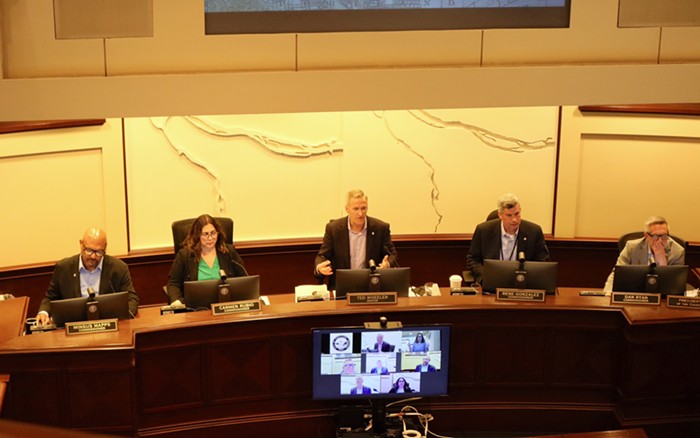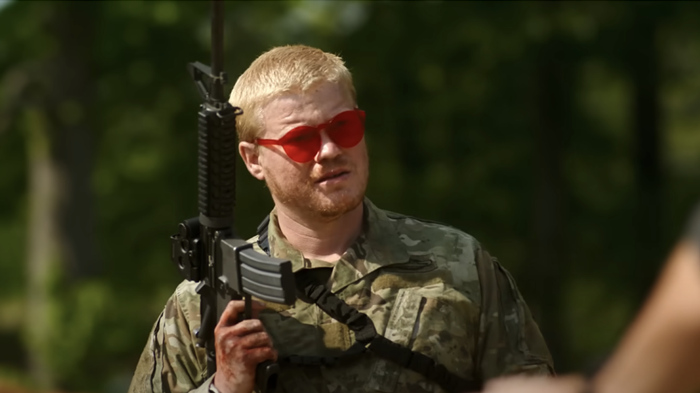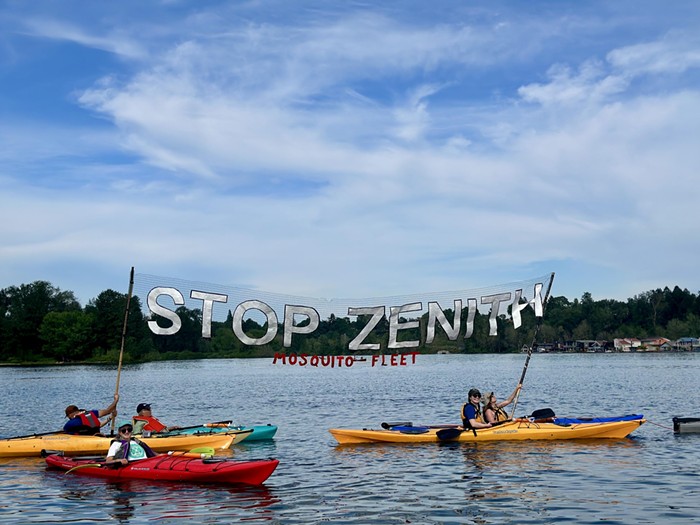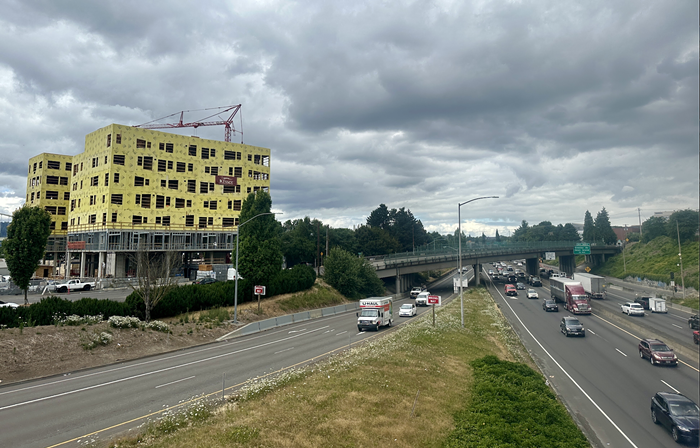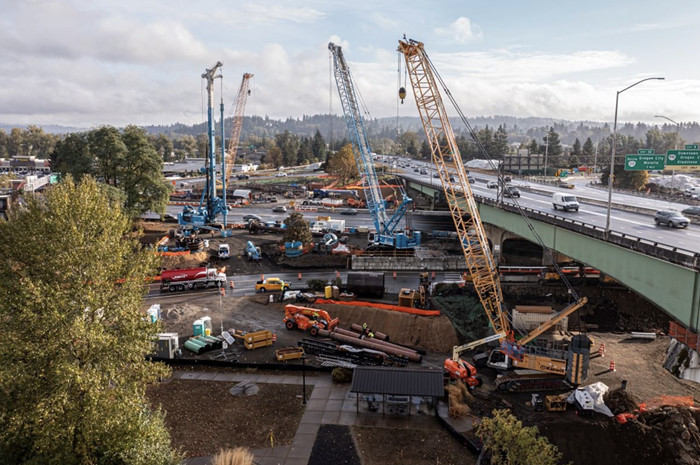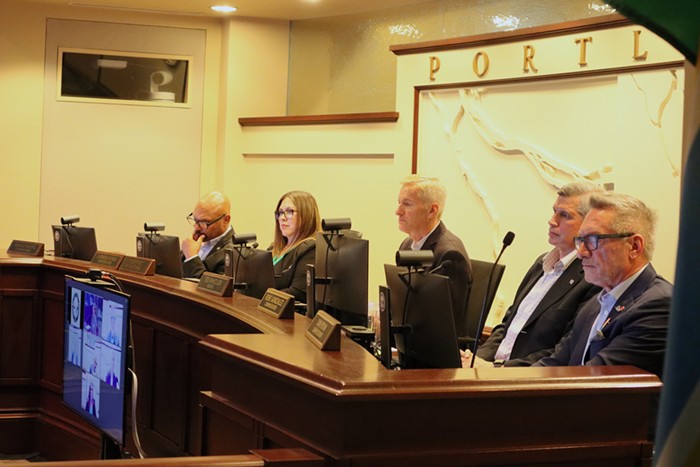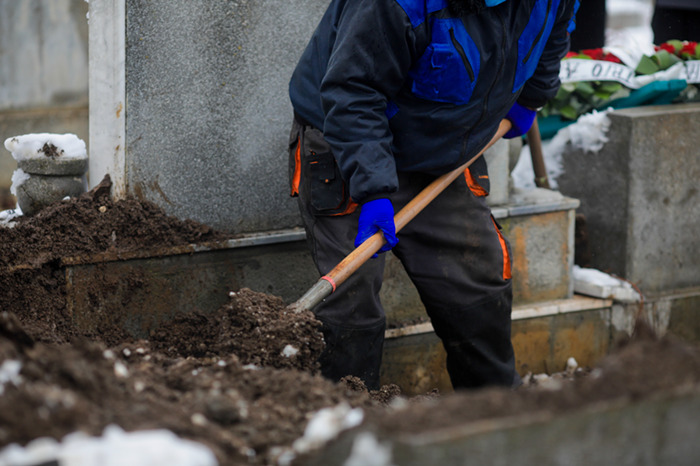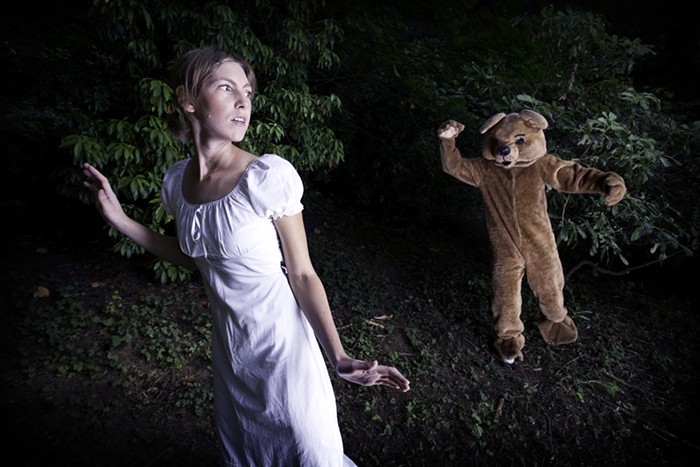As the sun set over the Alexis Greek Restaurant at 2nd and W Burnside on Friday evening, October 12, hundreds of cyclists gathered across the street, at the foot of the Burnside Bridge, and waited.
At 6:30 pm, ride organizer Carl Larson commandeered an orange PDX Pedicab, and stood on it to address the crowd, now nearly 400 strong.
"Thanks a lot for being here," Larson said. "I'm a cyclist, and I felt it was important to do this ride... Portland is an amazing city for riding bikes in." However, the tragic death of a 19-year-old art student the day before—Tracey Sparling was crushed by a cement truck at 14th and W Burnside—"reminds us that we're not safe from everything," Larson added.
Larson stepped aside, and Bicycle Transportation Alliance (BTA) Executive Director Scott Bricker hopped up on the pedicab, holding his baby daughter. He pointed out that until his daughter turns 35, she's at a greater risk of dying from an automobile crash than from any other reason.
Tragedies like "what we saw on the road yesterday," Bricker said, "need to be clearly and smartly addressed."
Friday night's ride—from the Burnside Bridge, up to 14th, where a white ghost bike marks the site of Sparling's death—was the first step.
"The more bicyclists that ride, the safer bicycling is," Bricker explained. "Portland has become, every year for the past 15 years, a safer place to ride a bicycle, because bicycle riding is increasing at an exponential rate. This is important for all of us, and it's important for you to be here tonight. The community awareness and action around the tragedies that happen... is an essential part of Portland's bicycle culture.
"We will be looking further into this issue, and talking to the Portland police to find out more," Bricker said, before stepping down from the pedicab, and joining the cyclists on their slow funeral procession.
Considering the tragedy of Sparling's death, it should be no surprise that "reducing conflicts between cyclists and motorists" would land near the top of the list during Commissioner Sam Adams' recent, extensive public opinion polling on transportation needs. Cyclists don't want to be killed, and drivers don't want to kill cyclists.
According to Bricker, two surveys of cyclists by the BTA showed that "riding with cars" was one of the top concerns. Even among self-described expert and confident riders, the top concerns were the speed and volume of cars, and driver behavior.
"They just don't feel comfortable around cars," Bricker says.
Even further, among the category of people who are interested in biking, but don't, the reason given for their reluctance is safety—specifically, the safety of sharing the same road spaces with cars.
But short of carving out physically separated bike paths, like European cycle tracks—a political impossibility, Bricker says—the closest the city can get is to create a network of streets that are designed to accommodate bikes at the expense of cars, which is what Adams' "Safe and Sound Streets" initiative is aiming for.
About 10 percent of the $274 million from that effort will go to expanding the city's bike boulevard network—bringing the number of boulevard miles up to over 100 from the 20 or so it has currently. The majority of those funds will go toward more bike-friendly signals at intersections, which is where virtually all bike accidents—like the one that killed Tracey Sparling—happen.
